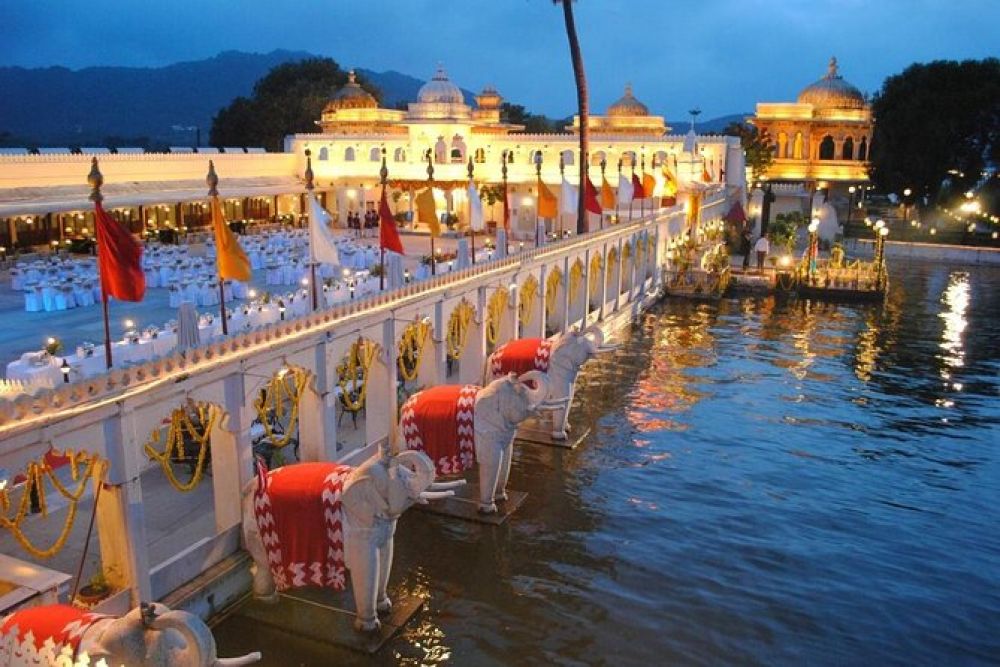

Jag Mandir is a beautiful palace located on an island in the picturesque Lake Pichola in Udaipur, Rajasthan, India. The foundations of this grand structure were laid in 1551 by Maharana Amar Singh, but its construction was mainly carried out under the reign of Maharana Karan Singh (1620–1628) and then completed by Maharana Jagat Singh I. Its history is enriched with tales of royal refuge and grandeur that now beckons tourists from across the globe.
Historically, Jag Mandir served as a refuge to Prince Khurram (who later became Emperor Shah Jahan) during his rebellion against his father, Emperor Jahangir. The palace's association with Shah Jahan is often believed to have been an inspiration for the construction of the famous Taj Mahal.
Tourism in Jag Mandir began to gain prominence in the 20th century when Udaipur started to become a popular destination for travelers seeking the charm of its lakes, palaces, and rich culture. The palace has since become an essential part of the city's tourism circuit.
As a historic site, Jag Mandir offers a unique blend of Rajput and Mughal architectural styles, with its marble structures and majestic towers capturing the imagination of visitors. The palace complex includes the stunning Gul Mahal, an array of gardens, and impressive structures like the Darikhana that showcase the grandeur of Rajasthani royalty. Tourism in the area has greatly benefited from these attractions, enticing both history buffs and architecture enthusiasts alike.
In the realm of modern tourism, Jag Mandir has embraced several trends to enhance the visitor experience:
The palace continues to be an integral site in Udaipur's tourism narrative, captivating visitors from around the world with its history, architecture, and the sheer beauty of its natural surroundings.
Visitors to Jag Mandir can explore the palace throughout the year, but the winter months from September to March are considered the best time to visit due to the pleasant weather conditions. As tourism continues to evolve, Jag Mandir remains a beacon of Udaipur's rich heritage, offering a timeless experience that blend's India's royal past with present-day cultural allure.